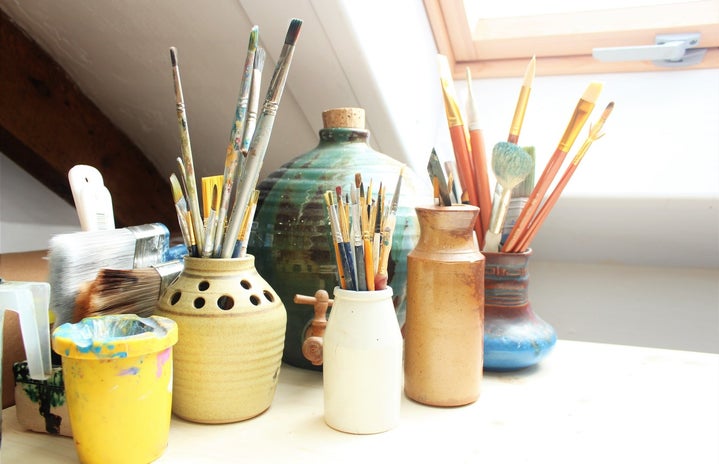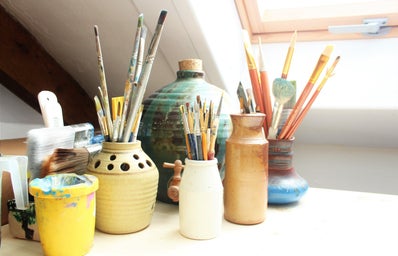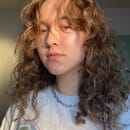With the Christmas season rapidly approaching, many friends and family members alike find themselves at a loss as to what to purchase for their creative companions. While some art supplies can be reasonably priced, they can also be overwhelmingly expensive–which can make a variety pack of craft materials a wonderful stocking stuffer or gift idea. From a fellow artist with a focus on painting, I know that paintbrushes are always appreciated due to their relatively short-lived nature when they are being used often.
In order to make accessibility easier, I have compiled a list of my favorite budget-friendly paintbrushes ranging from beginner acrylic brushes to more advanced oil brushes to satisfy the needs of all artists, educators, and students.
Joann Fabrics is one of my favorite craft stores, and while they are a bit pricey, they often have a variety of online coupons that are available to be used. Unfortunately, Joann does not currently offer student discounts, but they do provide teacher discounts for those who buy craft supplies in bulk, plus military discounts and healthcare worker discounts.
Changing Brushes Based On Medium
Something vital to note before purchasing your paint brushes is to consider what kind of paint you are working with. Paint is made differently based on the medium it is mixed with, which also means that paintbrush bristles are created differently to accommodate those differences in medium.
Typically, acrylic paint is made primarily using color pigment, an acrylic polymer binder, and water, while watercolors are created using mostly pigment and some sort of suspension binder, like gum arabic and water. These materials are what make acrylic paint and watercolor paint dispersible in water. On the other hand, oil paint is produced using powdered pigment and linseed oil to create a paste. Oil paint is not water-soluble, which means that some sort of paint thinner will be needed to blend colors and clean the brush because water will not work (if you’re a fan of Bob Ross, this is the type of paint he uses). Paint thinner, such as turpentine, is a very strong chemical so it is important to properly ventilate your workspace before working with oil-based paints for your safety. There is also ink, which is a very common medium for calligraphy, but it also has one of the most complex compositions. Beginner ink can either be based on water or alcohol-based solvent/dye and has a very low viscosity, so it is important to find a brush that is very absorbent for these kinds of mediums.
Best Acrylic Set
Because acrylic paint has a base of polymer binder, the paint is going to be thicker than watercolor. The brushes made for acrylic consider this change in thickness, while also keeping in mind that acrylic has a foundation of water. My favorite kind of brush for acrylic paint is usually a type of synthetic brush. Synthetic brushes are made of either nylon or polyester bristles, which can be dyed or baked to create an especially soft and absorbent tool. Synthetic brushes are commonly referred to as Taklon, and they can be used essentially for any medium, including acrylic, watercolor, and ink.
Found on the Joann website is the Artsmith 7 pack Gold Taklon paint brushes for only $6.99. In the pack, you receive one wide flat brush, two shading brushes, two round brushes, one liner brush, and one angular brush. While these can be used for any medium, I particularly love these for acrylic because they do not shed their bristles in the thick paint. Sometimes inexpensive paint brushes can have a lack of adhesive between the metal tip and the bristles, which can cause stray hairs to fall out, but for an affordable price of just $7, the quality of the paint brush is unbeatable.
Best Watercolor and Ink Set
Watercolor paints and ink have a similar viscosity, which indicates that they are soaked up similarly by paint brushes. Brushes made for watercolors and ink take into account how the liquid will be absorbed. Usually, a natural hair brush is used in the production of watercolor and ink brushes simply since they can hold more liquid at a time, which means less dipping back into your medium. This also means that the brushes can run a bit more expensive than the synthetic alternative.
One of the watercolor brush sets that I have enjoyed is the Art Supply Basic 10 pack Watercolor Brushes created using natural hair. This pack is found on the Joann website for $19.99, which makes it more expensive than synthetic, but they can hold and spread a lot of pigment with minimal shedding which is what I look for in a nice set of intermediate brushes. Joann also carries a 4 pack of Natural Bristled Bamboo Brushes for $13.99, perfect for ink projects and watercolor if you are looking for more of a medium to advanced tool. This four-pack is great for calligraphy, and the capacity of liquid that is held in the bristles is outstanding. Included in the natural bristled bamboo brushes is a thin liner brush which is wonderful for detailed work and layering. It is important to know that purchasing a moderately priced brush also means that you are paying for the quality in which it was manufactured. Often these more expensive brushes will last you longer than cheap classroom paint brushes that will need to be replaced.
Best Oil Set
Oil paint is one of my favorite mediums to use, and although it’s a bit tedious, it is such a fulfilling experience to create art this way. Oil paint brushes are normally found as natural, similarly to watercolor brushes, but instead of a pony hair blend which is used for low viscosity paints, oil paint brushes are usually a hog hair bristle (or less common, a sable bristle). Because oil paint is so thick, it is vital to find a brush that is meant to specifically spread medium to thick paint–and hog hair is perfect for this task. It also has a natural resistance to fraying which makes it a dependable investment.
Joann carries a terrific 10 pack of Art Supply Basics Hog Hair Brushes that are meant primarily for oil painting for $19.99. These brushes have lasted me close to two years now, and even through some damage from exposure to the paint thinner, they have held their shape. My only comment on these brushes is that they are a bit crunchy when they are first purchased, but this goes away after a few cleanings and uses.
Caring for your Brushes
The best way to get your money’s worth out of these brushes is to simply give them a little tender loving care at the end of each use. This means making sure to thoroughly rinse acrylic and watercolor brushes with lukewarm (not hot!) water to ensure there is minimal dried paint left in the bristles. It is important to remember to never let them soak in a cup overnight as this can break down the glue and wood handles. A personal favorite way to preserve my brushes is to swirl them around in a tub of The Master’s Brush Cleaner for about 10 to 20 seconds before finally rinsing them off. I also like to use a dry towel to run along the brush towards the bristles to form them at a point before storing them upright. The Master’s Brush Cleaner and Preserver also work to tackle oil paint, but I would suggest cleaning oil paint brushes as best as possible with paint thinner or brush cleaner before moving to an additional soap.
Happy Painting!
Now that you are familiar with some of the basics of painting mediums and their ideal corresponding brushes, you should be all set into looking to purchase your next pack of dependable painting tools to further your career as an artist. As mentioned, the holidays are coming up and if you have a friend or family member who would appreciate the gift of creation, consider getting them new supplies–and if you are interested in any of the materials I listed above but think they are out of your personal budget, now would be a good time to perhaps put them on a Christmas list so they could be purchased for you. Best of luck in your creative endeavors!


